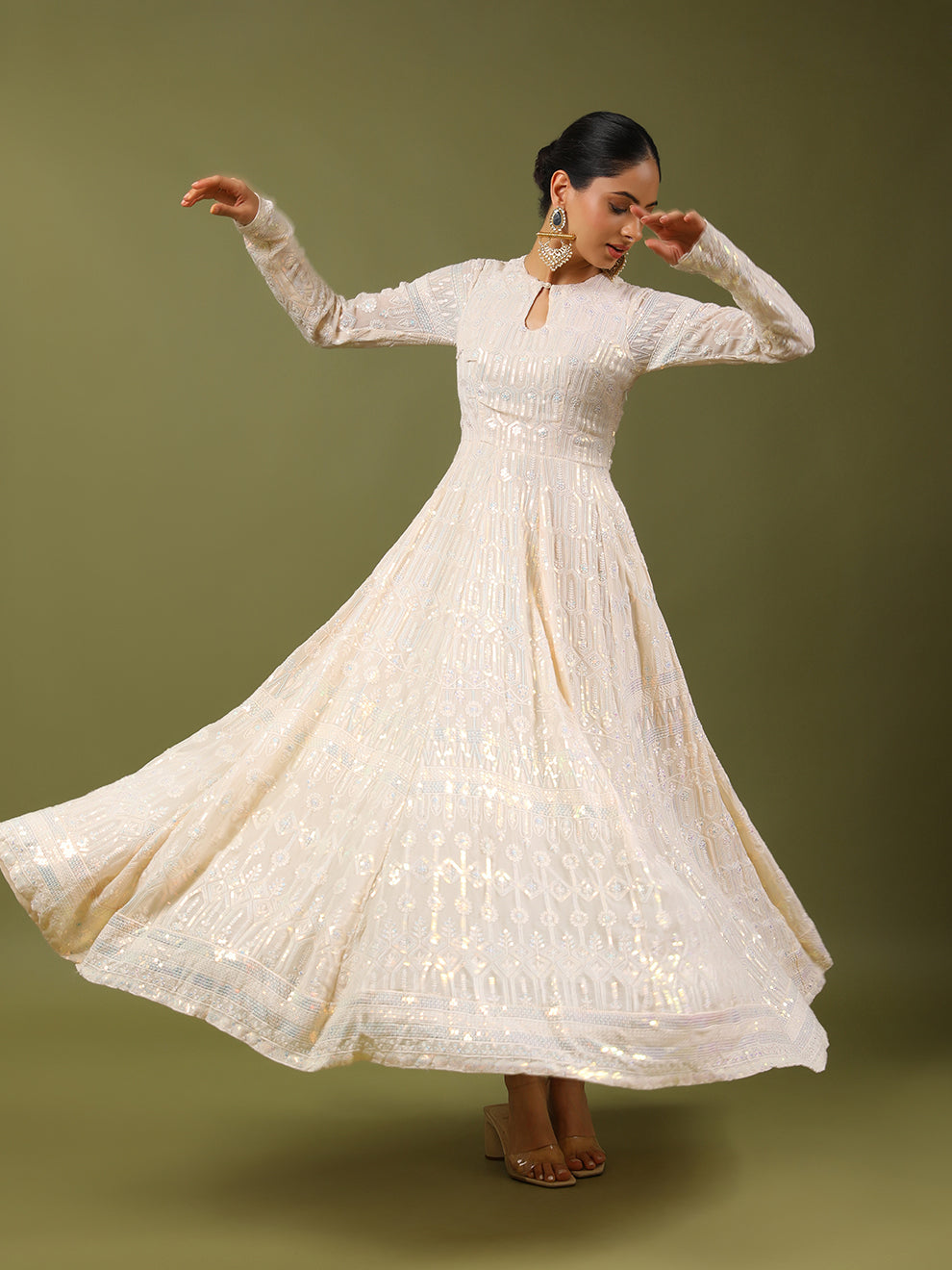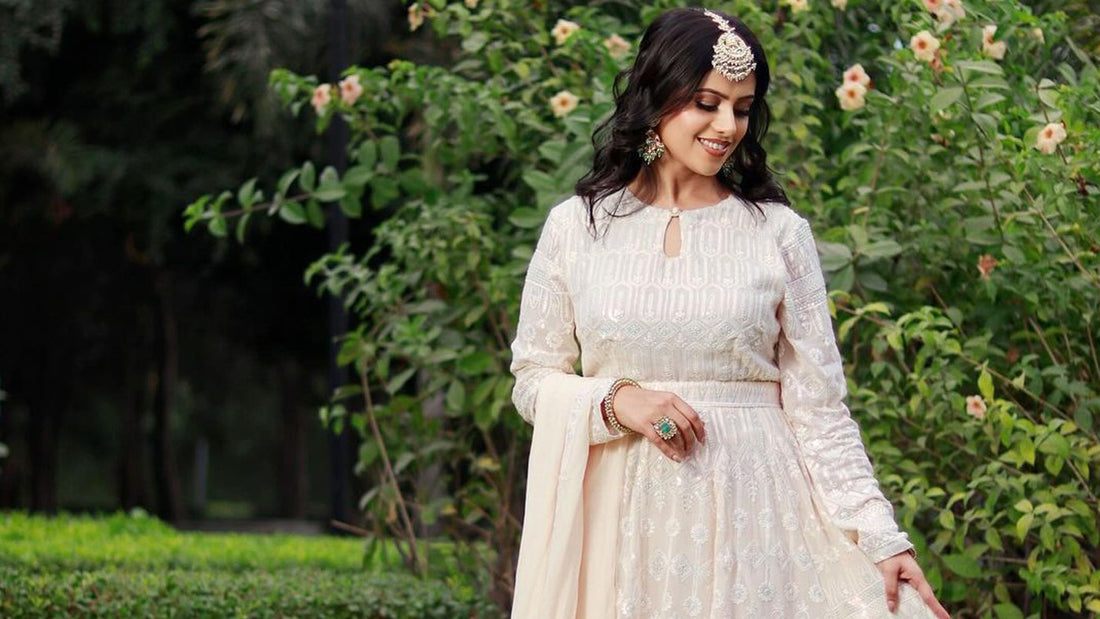Embroidered kurtas have a distinct attractiveness that distinguishes them from other sorts of kurtis. These outfits' delicate embroidery work provides a touch of craftsmanship and beauty. From traditional motifs to modern designs, embroidered kurtas give ladies a variety of ways to show their style and personality.
In this blog we will explore the beautiful heritage of embroidery art in India and the types of embroidery we can see in the clothing industry.
History of Embroidery in India:
Embroidery is one of the oldest and most popular forms of textile art in India. It has been practiced for centuries and has evolved over time to reflect the diverse cultures and traditions of the country.
Indian embroidery dates back to the Indus Valley Civilization, which flourished in the northwestern region of the Indian subcontinent between 2800 and 1800 BCE. The oldest evidence of needlework in India dates from this time period, and it is thought that traders from Central Asia introduced the art to the region.
Embroidery techniques in India have changed and expanded over the years, influenced by a range of cultures and customs. The Mughal Empire, which dominated India from the 16th to the 18th centuries, had a significant impact on Indian embroidery. The Mughals brought their own techniques and designs with them, which mixed with existing Indian styles to create new and unique kinds of needlework.
Today, Indian embroidery is still a popular art form, and it is used to decorate a variety of textiles, including clothing, home furnishings, and accessories.
Famous embroideries of India:
Let us take you along the lanes of different Indian Embroideries that still mark their uniqueness around the globe.
-
Kashida:
Kashmiri Kashidakari is one of the most well-known embroideries in Kashmir. Sultan Zain-Ul-Abidin became a patron of Kashidakari art in the 15th century. Its foundation material is wool, silk wool, or Cotswold, and it comes in a range of colors. What else you ask?
The stunning designs are inspired by Kashmir's natural environment!
-
Kasuti:
Kasuti is a type of feminine needlework from Karnataka. It dates back to the Chalukyan era (have you seen the movie Ponniyin Selvan? The Chalukyas were frequently involved in conflicts with the Cholas! ), and female courtiers in Mysore practiced it. It consists of four types of stitches: menthi, gavanti, negi, and murgi. Kasuti embroidery can be found on a variety of home products such as pillow covers, curtains, bed sheets, and so on.
-
Chambarumal:
Embroideries on handkerchiefs began in the 18th century in Chamba, which is located in the Himalayan foothills. Mulmul, hand-spun, hand-woven, and coarser khaddar are used for the needlework. The designs are inspired by small Pahari paintings and depict the indigenous tales of Ramayana and Mahabharata. The patterns can be found on shirts, caps, and slippers.
-
Mirror Work:
Who doesn't love a kurta or a lehenga with good mirror work during festivals? Originally done in mica and silver coins, Iranian travelers brought this technique to India in the 17th century. Women craftsmen from Kutch and other regions of Rajasthan are well-known for their mirror artistry. This art is mostly found on ghagras, blouses, dupattas, and even denim jackets and jeans!
-
Aari:
The Mughals' effect on Indian embroidery styles cannot be denied! Aari's work is currently being practiced in Rajasthan, Lucknow, and Kashmir. Its embroidery includes chain stitch loops, beads, and sequins. It is beautifully used in sarees and focuses on the pallu of the saree body. The blouse is left plain to provide both comfort and fashion.
-
Banjara:
Similarly to Banjaras' ubiquitous presence throughout India, their needlework style is seen in many places, resulting in variances in style. The stitching is done on a brilliantly coloured foundation material with geometric motifs. It features a patchwork and mirror work combination and can be found on suits, lehengas, purses, and blouses, with a successful fusion with western wear.
-
Zardozi:
Agra is famous for its magnificent metal embroidery, which was originally used for royal apparel in India. Zari work is done with silver and gold metal wires that are sensitive to the environment and can cause the weave to appear drab and dry. Metal embroidery is typically done on silk, satin, or velvet fabric and includes pearls, beads, and precious stones.
-
Parsi Gara:
Parsi Gara is a well-known Indian traditional embroidery that was influenced by Persian and Chinese works. The original fabric used for the designs was named 'Sali Ghaj,' however it has been replaced with Crepe de Chine. During the wedding season, the Parsi community, particularly the women, generally wears this design!
-
Toda:
Tamil Nadu is well-known for this peculiar form of embroidery, which is done on shawls by tribal men and women. Poothkuli are shawls with Toda embroidery, and the motifs are worked by counting the threads. Cotton is employed as a fabric, and the thread colors are red and black. It is influenced by regional legendary traditions and depicts the region's nature and fauna.
- Lucknowi (Chikankari): Chikankari is a traditional embroidery style from Lucknow, India. Chikankari is a delicate and artfully done hand embroidery on a variety of textile fabrics like cotton, chanderi, muslin, georgette, viscose, silk, organza, net, ect. White thread is embroidered on cool, pastel shades of light muslin and cotton garments. Nowadays chikan embroidery is also done with colored and silk threads in colors to meet the fashion trends and keep chikankari up-to-date. Lucknow is the heart of the chikankari industry today and the variety is known as Lucknawi chikan.
Due to the remarkable craftsmanship and cultural significance, embroidered kurtas are loved by all. They are timeless and people of all age groups from teenagers to senior citizens seem to enjoy drenching in its uniqueness.
Above all, embroidered kurtas provide women with the freedom to express their uniqueness and highlight their individual styles, making them an essential component of every fashionable woman’s wardrobe. So, if you are searching for the perfect embroidered designer kurti, explore the latest collections of Handme!
References:
- https://isdi.in/blog/top-10-traditional-embroideries-of-india/
- https://medium.com/@tulikajain32/embroidered-kurta-for-ladies-a-class-apart-choice-for-every-woman-621c6f010d4e
- https://www.vam.ac.uk/articles/indian-embroidery
- https://awesomepatternstudio.com/blog/blog/exploring-cultural-embroidery-traditional-techniques-from-around-the-world/
- https://www.linkedin.com/pulse/10-traditional-embroidery-india-sambreen-shamim-gwakf/
- https://thewire.in/books/book-review-shoemakers-stitch-mochi-embroidery
- https://thewire.in/books/book-review-shoemakers-stitch-mochi-embroidery





